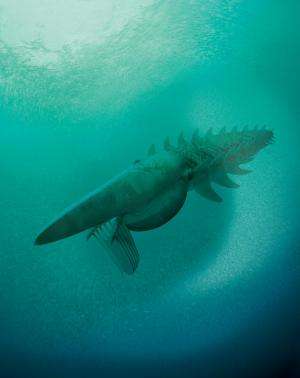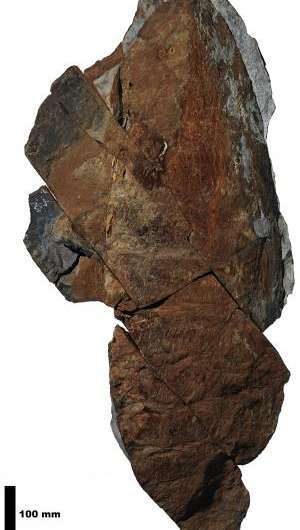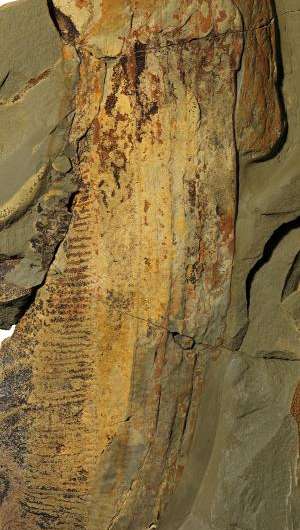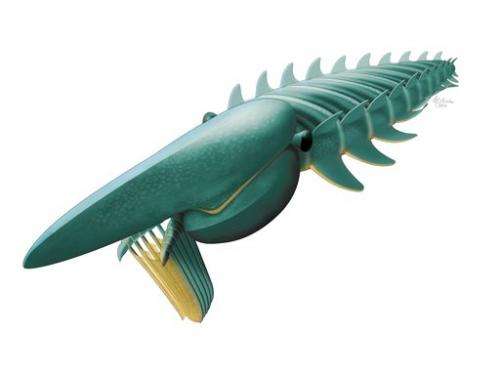Frankensquid creature roamed seas 480m years ago (w/ Video)

A 480-million-year-old relative of the lobster, cockroach and tarantula was a sea monster which snared food with spine-covered protrusions on its head, researchers said Wednesday.
The two-metre (seven-foot) creature used spiny appendages to filter morsels from ocean water, said a study in the journal Nature.
The technique is similar to the method used by modern-day ocean giants like baleen whales. But the bizarre beast also shared features with today's arthropods, the family of invertebrates with exoskeletons that includes spiders, insects, crustaceans and centipedes.
It had pairs of "flaps", possibly for swimming, along the length of its segmented body.
Aegirocassis benmoulae is the earliest giant filter feeder yet discovered.
"This would have been one of the largest animals alive at the time," said study co-author Allison Daley of Oxford University.
The creature, which lived in the Palaeozoic era, is named after sea god Aegir from Norse mythology, the Latin for helmet (cassis) and a Moroccan fossil hunter, Mohamed Ben Moula, who discovered its remains.
The creature's anatomy was pieced together by studying fossils unearthed at Morocco's Lower Fezouata Formation and kept in the collection of the Yale Peabody Museum of Natural History in Connecticut.

One particularly well-preserved, three-dimensional fossil was gently pried from surrounding rock using tiny needle-like tools, an Oxford University statement said.
An artist's impression reveals an animal with a protruding, squid-like head attached to a body resembling that of a shrimp but with two pairs of flaps per segment, both upward- and downward-pointing, instead of legs.
The reconstructed A. benmoulae had side-facing eyes and two articulated appendages jutting from the "mouth" area, covered in a comb of spines with which it captured plankton.
"While filter feeding is probably one of the oldest ways for animals to find food, previous filter feeders were smaller, and usually attached to the sea floor," said Daley.
Gentle giant
"We have found the oldest example of gigantism in a freely swimming filter feeder," Daley said.

The new species belonged to a now-extinct clan of marine animals called anomalocaridids which first appeared on the scene about 520 million years ago.
Most of A. benmoulae's older and contemporary cousins, however, were apex predators with sharp-toothed mouths.
The researchers said the creature's flaps were likely the precursors of the double-branched legs of today's arthropods, "but at a stage before they fused together into one leg".

Arthropods are A. benmoulae's closest living relatives, and use their versatile legs for everything from walking and sensing their environment, to eating and mating.
The Palaeozoic period lasted from about 570 to 250 million years ago—from the rise of the first invertebrates with hard external skeletons, to the dominance of reptiles.
It ended with the greatest extinction event in the history of Earth, which then had a single continent, followed by the Triassic period and the rise and fall of the dinosaurs.
More information: Anomalocaridid trunk limb homology revealed by a giant filter-feeder with paired flaps, Nature, (2015) DOI: 10.1038/nature14256
Journal information: Nature
© 2015 AFP



















